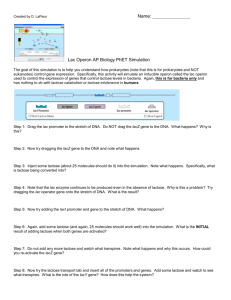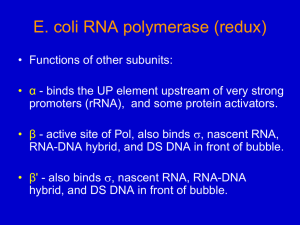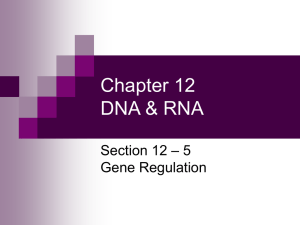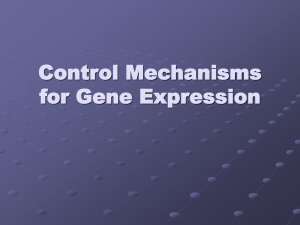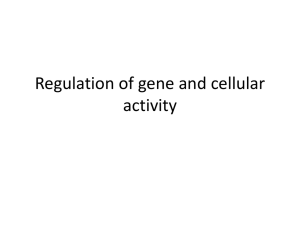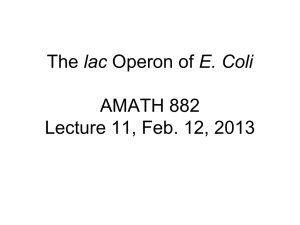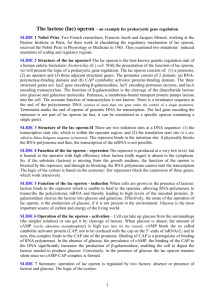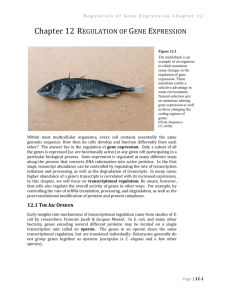Lac Operon Modeling Lab: Gene Regulation Simulation
advertisement
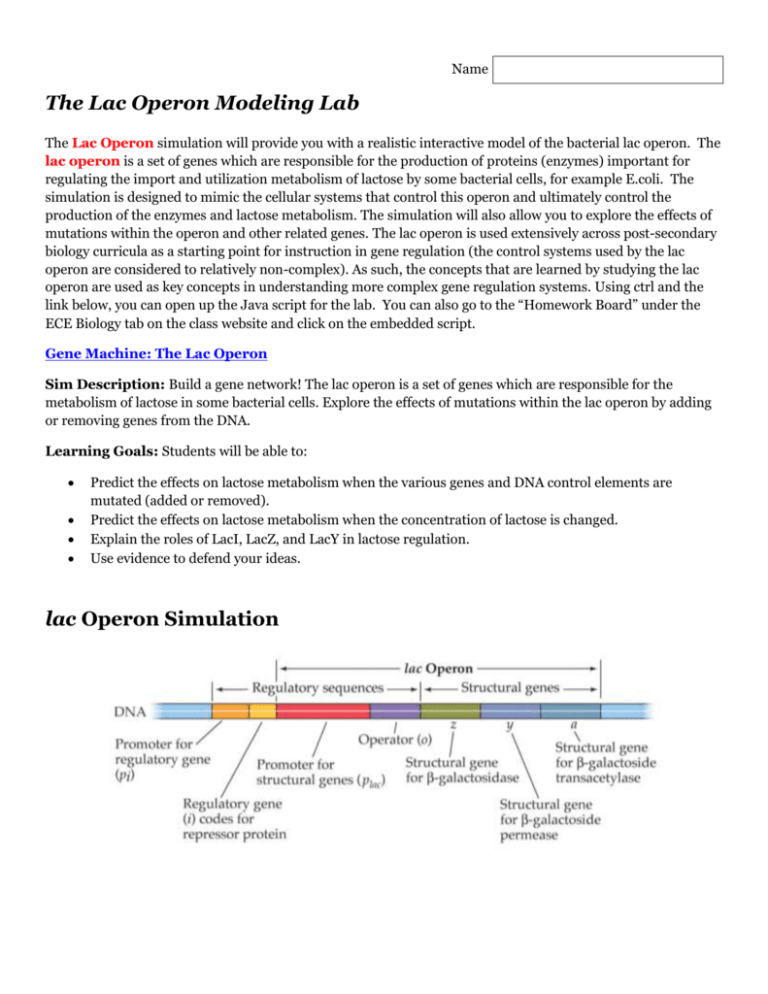
Name The Lac Operon Modeling Lab The Lac Operon simulation will provide you with a realistic interactive model of the bacterial lac operon. The lac operon is a set of genes which are responsible for the production of proteins (enzymes) important for regulating the import and utilization metabolism of lactose by some bacterial cells, for example E.coli. The simulation is designed to mimic the cellular systems that control this operon and ultimately control the production of the enzymes and lactose metabolism. The simulation will also allow you to explore the effects of mutations within the operon and other related genes. The lac operon is used extensively across post-secondary biology curricula as a starting point for instruction in gene regulation (the control systems used by the lac operon are considered to relatively non-complex). As such, the concepts that are learned by studying the lac operon are used as key concepts in understanding more complex gene regulation systems. Using ctrl and the link below, you can open up the Java script for the lab. You can also go to the “Homework Board” under the ECE Biology tab on the class website and click on the embedded script. Gene Machine: The Lac Operon Sim Description: Build a gene network! The lac operon is a set of genes which are responsible for the metabolism of lactose in some bacterial cells. Explore the effects of mutations within the lac operon by adding or removing genes from the DNA. Learning Goals: Students will be able to: Predict the effects on lactose metabolism when the various genes and DNA control elements are mutated (added or removed). Predict the effects on lactose metabolism when the concentration of lactose is changed. Explain the roles of LacI, LacZ, and LacY in lactose regulation. Use evidence to defend your ideas. lac Operon Simulation Part I. Make Predications Using the Simulation 1. Some mutations can disable genes. What might happen if there is a mutation to the lacI gene? The lacZ gene? The lacY gene? Use the simulation and remove each gene from the DNA molecule and record what happens. Part II. Next Steps… 2. Imagine you are a researcher exploring the roles of the genes from the lac operon in prokaryotic E. coli. Use photos you “snip it” from the Internet and photos you take of the simulation, along with your knowledge you gained from using the simulation, and create a tutorial on how gene regulation works in living organisms with Lac as the model system. The tutorial should be about the role of each part of the lac operon and the effects mutations have on different parts of the lac operon. Part III. Function of Each Part (please note the names of each part may be different between the picture above and the simulation) a. Promoter for regulatory gene/lacI gene b. Regulatory gene/lacI gene c. Repressor protein/LacI d. Promoter for structural genes e. Operator for structural genes f. lacZ gene g. LacZ protein h. lacY gene i. LacY protein Part IV. Tying it all together!! Lac Operon ECE Biology PhET Simulation The goal of this simulation is to help you understand how prokaryotes (note that this is for prokaryotes and NOT eukaryotes) control gene expression. Specifically, this activity will simulate an inducible operon called the lac operon used to control the expression of genes that control lactose levels in bacteria. Again, this is for bacteria only and has nothing to do with lactose catabolism or lactose intolerance in humans. Directions: Now that you’ve experimented with the simulation, tie it all together by following the steps below and answer the questions you see at each step. If you need the PowerPoint to help, regulate yourself!! Step 1: Drag the lac promoter to the stretch of DNA. Do NOT drag the lacZ gene to the DNA. What happens? Why is this? Step 2: Now try dragging the lacZ gene to the DNA and note what happens. Step 3: Inject some lactose (about 25 molecules should do it) into the simulation. Note what happens. Specifically, what is lactose being converted into? Step 4: Note that the lac enzyme continues to be produced even in the absence of lactose. Why is this a problem? Try dragging the lac operator gene onto the stretch of DNA. What is the result? Step 5: Now try adding the lacI promoter and gene to the stretch of DNA. What happens? Step 6: Again, add some lactose (and again, 25 molecules should work well) into the simulation. What is the INITIAL result of adding lactose when both genes are activated? Step 7: Do not add any more lactose and watch what transpires. Note what happens and why this occurs. How could you re-activate the lacZ gene? Step 8: Now try the lactose transport tab and insert all of the promoters and genes. Add some lactose and watch to see what transpires. What is the role of the lacY gene? How does this help the system?
